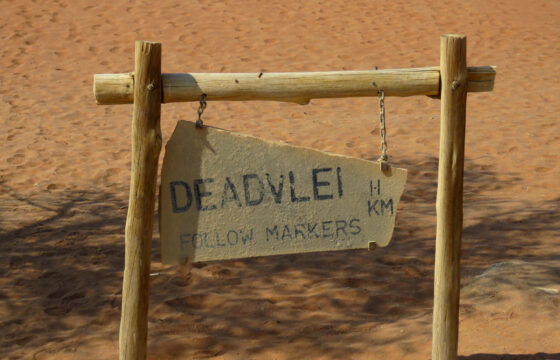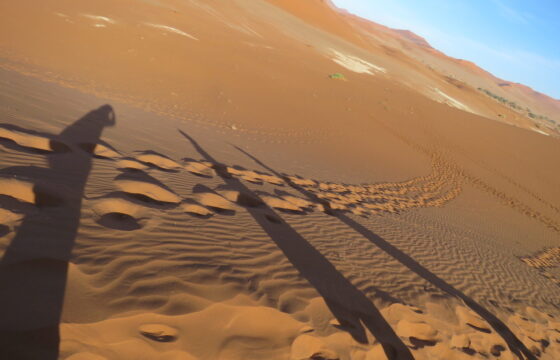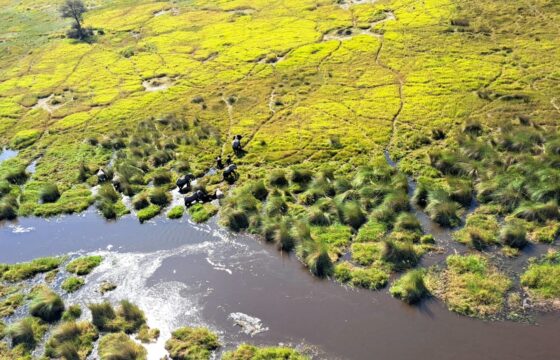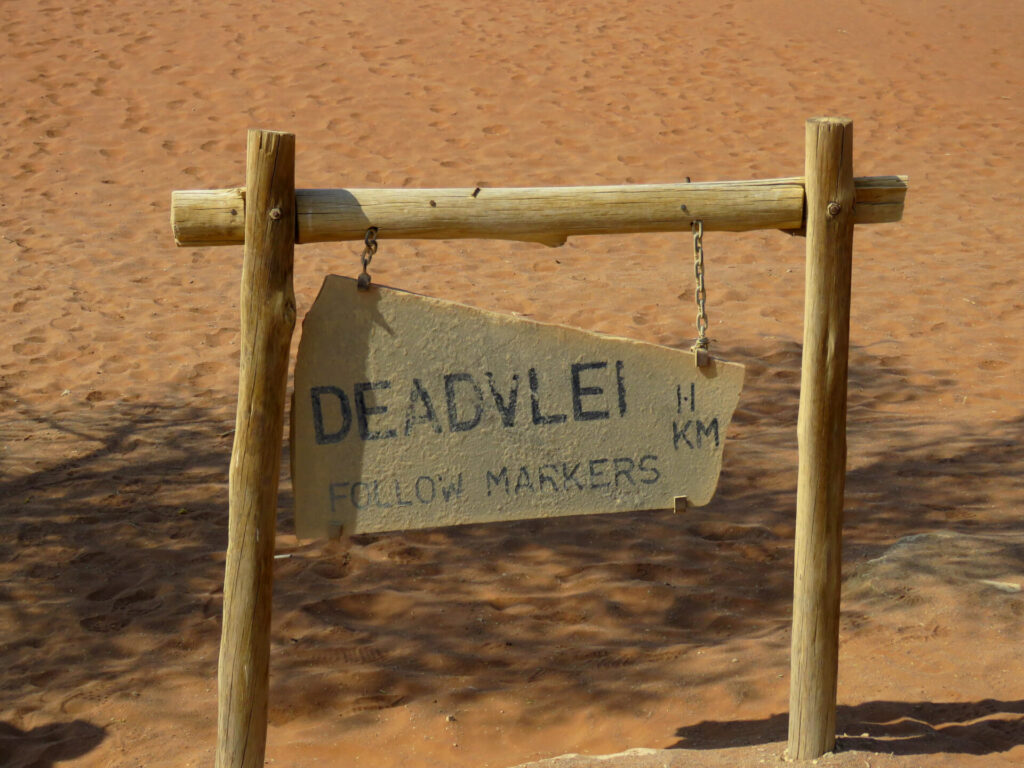
Namibia is the kind of place that makes you pause and whisper, so this is what Earth can look like.
But the desert isn’t its only magic. There’s Etosha National Park, where wildlife roams free across vast salt pans; the quirky seaside town of Swakopmund with its mix of dunes and German bakeries; and endless drives where layers of rock feel like nature’s own art gallery.
Wherever you go, you’ll find landscapes that simply don’t exist anywhere else.
Here’s a quick, distilled look at Namibia’s essentials and the highlights you won’t want to miss.
Essential Info
- Capital: Windhoek
- Languages: English is official, though Afrikaans and German are also heard.
- Currency: Namibian Dollar (NAD). South African Rand is accepted at the same value.
- Time Zone: UTC +2 (no daylight savings).
- Visa: Many travelers need a visa. It can be arranged at the airport or online in advance.
- Best Season: April–May for mild, dry weather. June–July brings chilly mornings and nights, but clear skies.
- Travel Tips: Bring sun protection for the strong daytime rays, and layers for the cool mornings and evenings.
Namibia’s Must-See Spots
Namib Desert (Sossusvlei & Deadvlei)
One of the world’s oldest deserts — 35 million years in the making. The Namib Sand Sea, a UNESCO World Heritage site, is the planet’s only fog-fed desert.
Climb towering dunes like Dune 45 (170 m), Big Daddy (325 m), or Dune 7 (388 m). It’s not easy, trudging up shifting red sand feels a bit like monk training, but the sunrise views are worth every step.
And then there’s Deadvlei: ghostly trees, over 600 years old, frozen in time against a white clay pan and crimson dunes. It’s surreal, haunting, and utterly photogenic.
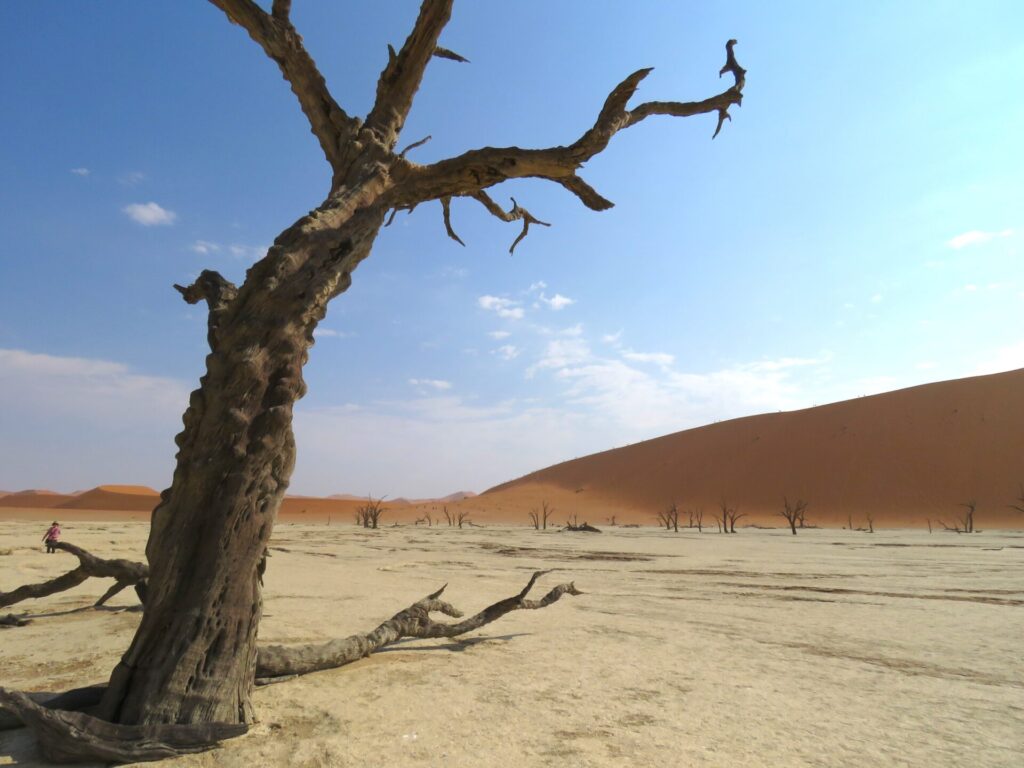
Etosha National Park
Etosha National Park spans 22,000 km² — about the size of Wales.
At its heart lies the Etosha Pan, a salt flat stretching 130 km, so vast it can even be seen from space.
In the wet season, a thin layer of water turns it into a breeding ground for over a million flamingos. In the dry months, it flips to a blinding white desert, where windblown salt sprinkles minerals into the soil — nature’s own recycling system.
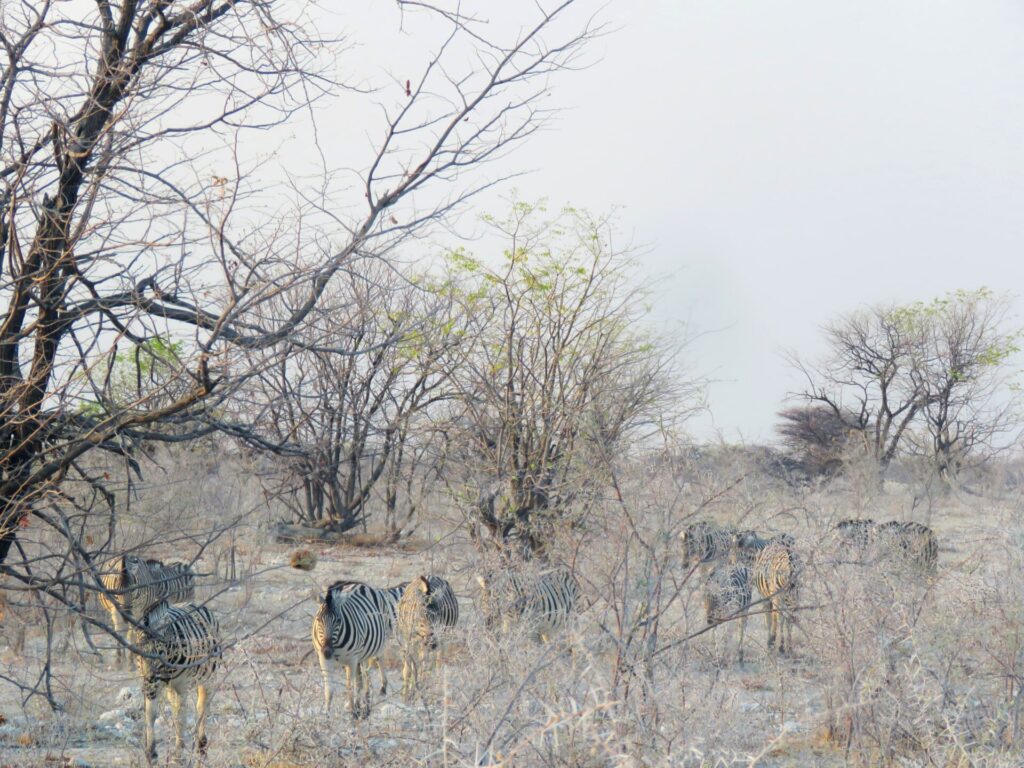
Etosha is also a stronghold for the black rhino, where decades of conservation have brought the species back from the brink of extinction. Elephants, lions, rhinos, all take their place here on a stage that’s as real as it gets.
Skeleton Coast
Nicknamed “the Gates of Hell” and “the Land God Made in Anger,” this shoreline is brutal and mesmerizing all at once.
Here you’ll find the ghostly shipwreck of the Eduard Bohlen, stranded and slowly swallowed by sand, as if time itself is sinking. And if you’re lucky, you might spot the elusive desert lions or desert elephants, living proof of resilience in impossible conditions.
Swakopmund & Sandwich Harbour
A seaside town where German colonial charm meets wild dunes. Stroll past pastry shops and beer halls, then head out for quad biking, sandboarding, or a boat ride to meet dolphins and seals.
Further south lies Sandwich Harbour, where Atlantic waves kiss the dunes in a one-of-a-kind landscape. The 4×4 route across tidal flats appears only at low tide — thrilling, ephemeral, and unforgettable.
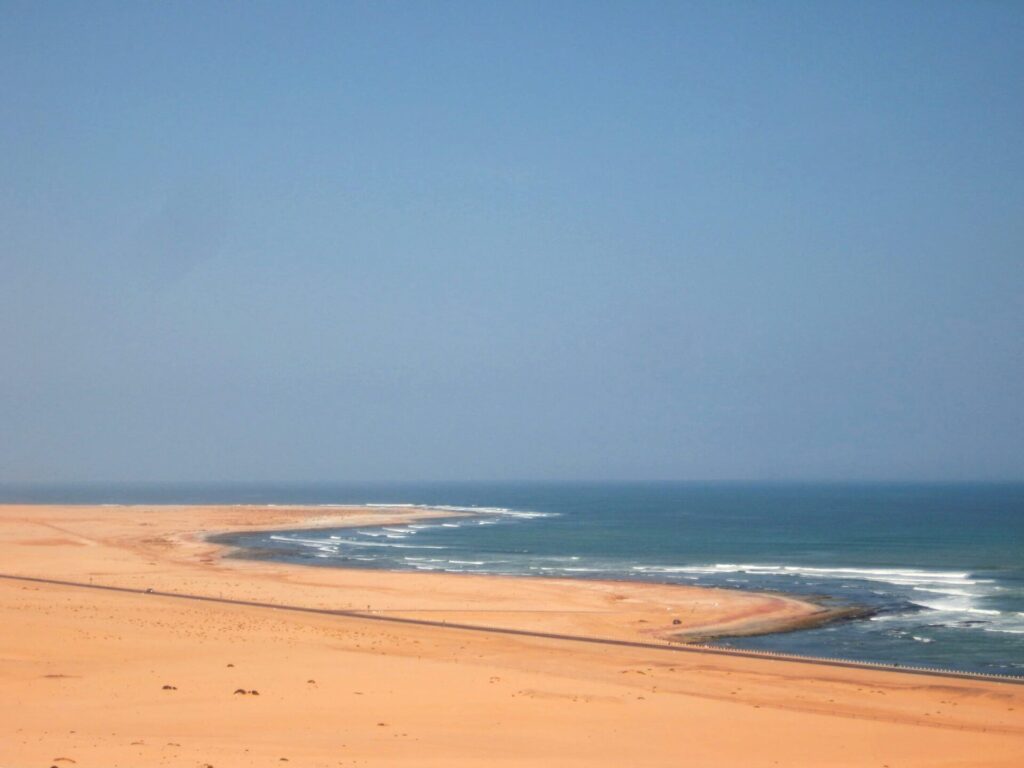
Himba Villages
In the Kunene region, the semi-nomadic Himba people continue age-old traditions.
Their ochre-red skin, coated with a mixture of earth and fat, reflects both beauty and protection. In the heart of each village burns the “ancestral fire,” a spiritual link across generations.
Visiting a Himba village is not just sightseeing, it’s an encounter with living knowledge of how to thrive in one of the world’s harshest landscapes.
Fish River Canyon
Africa’s largest canyon, stretching 160 km long and plunging 550 m deep.
For adventurers, the five-day, 90 km trek is a rite of passage, scrambling down cliffs, wading through rivers, testing both stamina and spirit.
At night, with no light pollution for miles, the Milky Way spills across the sky. Standing on the canyon rim beneath that cosmic canvas is the kind of moment that lingers forever.
Quick Q&A
- Driving? A 4WD is highly recommended. Gravel roads and punctures are common, so a spare tire is a must.
- Distances? Expect several hundred kilometers between major sights — plan with time to spare.
- How many days? 4+ days for desert highlights, 6+ if you add Swakopmund, and 9+ for the full desert–coast–safari combo.
Final Thoughts
Namibia is a country where landscapes shift like a living heartbeat from towering dunes to salt pans, from crashing surf to silent canyons.
Right next door lies Botswana, offering a completely different wilderness. Together, the two countries reveal the depth and diversity of southern Africa.
Your journey can be as bold or as gentle as you dream, we’re here to help shape it into your own one-of-a-kind adventure.

